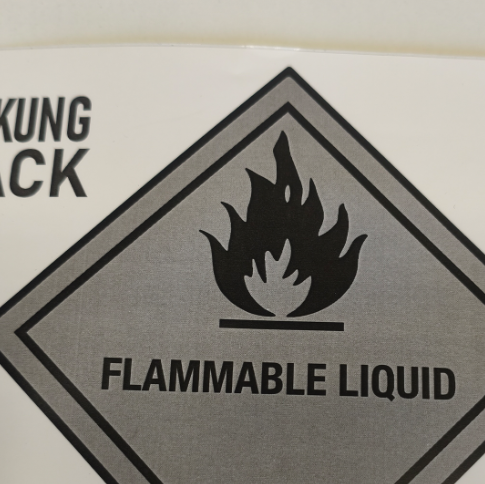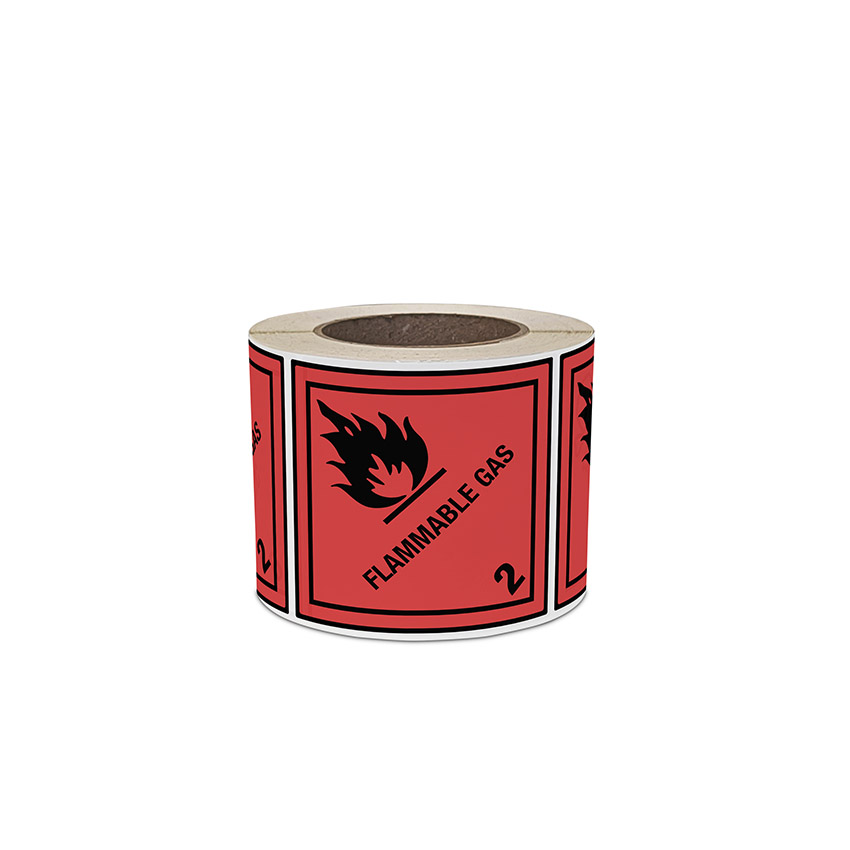Date:
February 5, 2025
Categories:
Company, Hazard Labels, Products, Sustainibility, Tips & Tricks,
Hazardous substances require safe handling – and one of the most important safety measures is correct labeling. In practice, however, there is always the question of whether you should print your own hazard labels. Small companies with low requirements in particular might think that they can save money in the long term by printing their own labels. But the reality is often different. When it comes to labeling dangerous goods, the legal requirements and technical specifications are very strict. Mistakes in this area can not only be expensive, but can also jeopardize safety. In this article, we will show you why printing your own hazard labels is not an easy solution and how BOXLAB Services can save you the risks.
Print your own hazard labels - what do you need to consider?
Before you decide to print hazard labels yourself, you should be aware of the many requirements involved. There are legal requirements regarding the sizes, spacing, colors, materials and line widths of hazard labels. Failure to comply with these requirements can quickly result in fines, penalties and, in the worst case, legal consequences.
Insecure PDF templates from the Internet
Many companies are looking for a quick solution and simply download a PDF template for hazard labels from the Internet. They often search for terms such as “dangerous goods labels PDF”, “print your own danger labels”, “ADR label template” or “dangerous goods labels to print out”. But there is a great danger here: many of these PDF files are outdated or do not comply with current legal regulations. If you rely on them, you risk incorrect labeling and possible penalties. An officially compliant danger label PDF must meet certain standards, which change regularly.
Incorrect sizes and spacing
Hazard labels must comply with the legal requirements set out in various international standards such as the ADR Regulation (for road transport), the IMDG Code (for sea transport) and the IATA DGR (for air transport). These standards specify not only the size and shape of the hazard label, but also the exact positioning of the symbols and spacing. A common mistake in self-printing is that the minimum sizes for symbols and text fields are not adhered to. Distances between the symbols or to the edges of the hazard label must also comply with the legal requirements. If these requirements are not implemented correctly, the hazard label is considered invalid – and this can have serious consequences.
Material defects and durability
Another important point is the choice of the right material. Hazard labels must be made of special, durable materials that are resistant to water, UV radiation, chemicals and extreme weather conditions. If you print danger labels yourself, you must ensure that you use suitable material that meets the requirements for the transportation of dangerous goods. This is not only about the durability of the labels, but also about their visibility under difficult conditions (e.g. in the rain or in the dark).
Errors in label arrangement and line widths
There are precise requirements for line widths and pictogram arrangement. These must not be undercut or exceeded. The line width of border lines and symbols in particular is crucial to ensure that the hazard label remains easily recognizable even when soiled or exposed to the elements. Errors in this respect lead to incorrect labeling, which in turn calls into question the permissibility of transport.
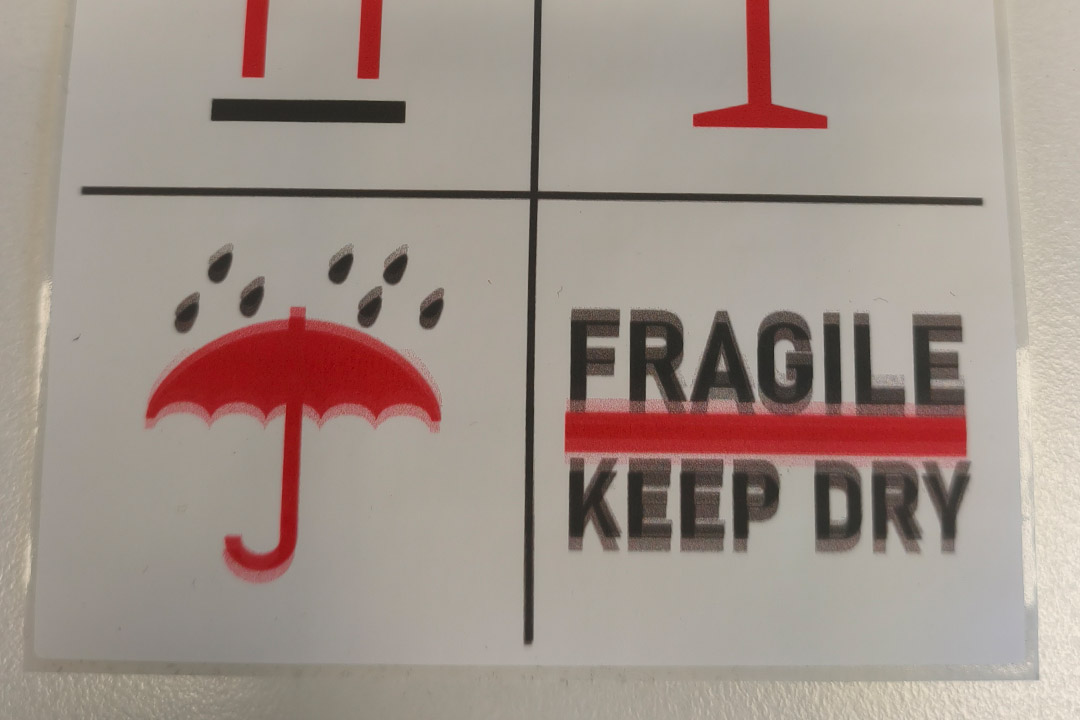
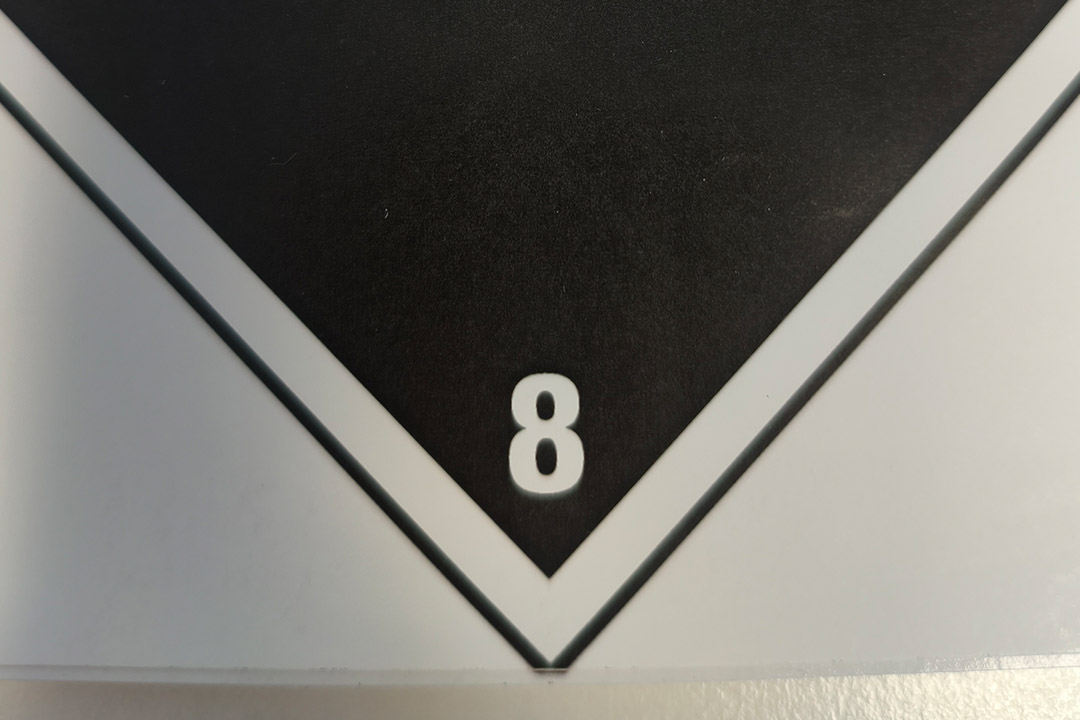
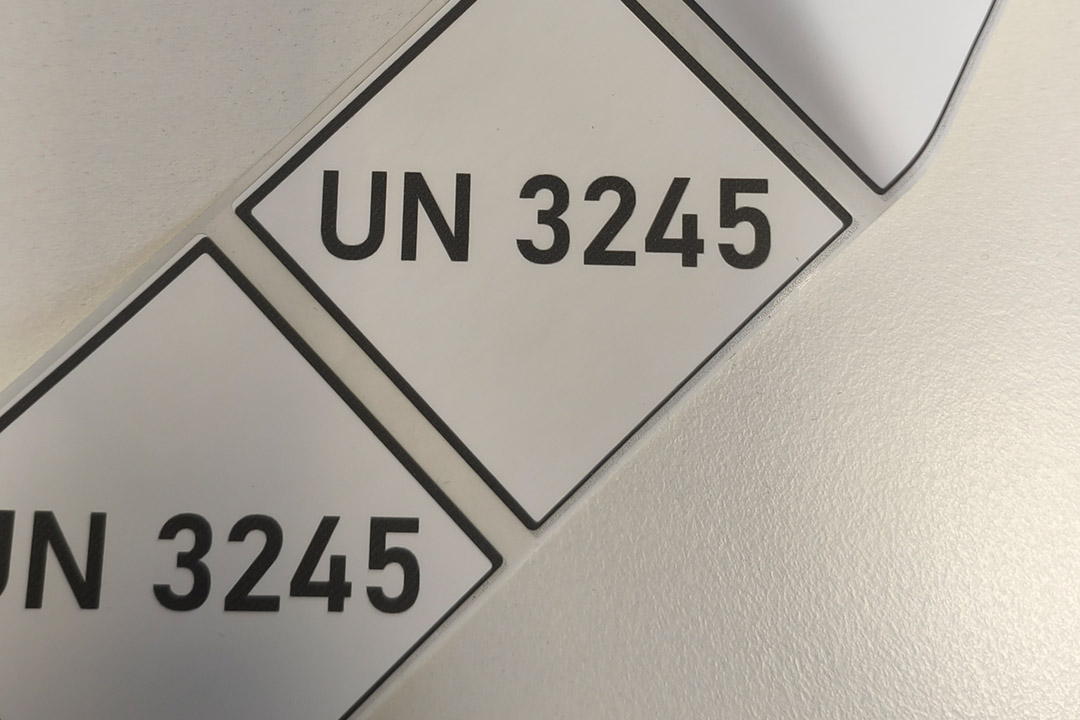
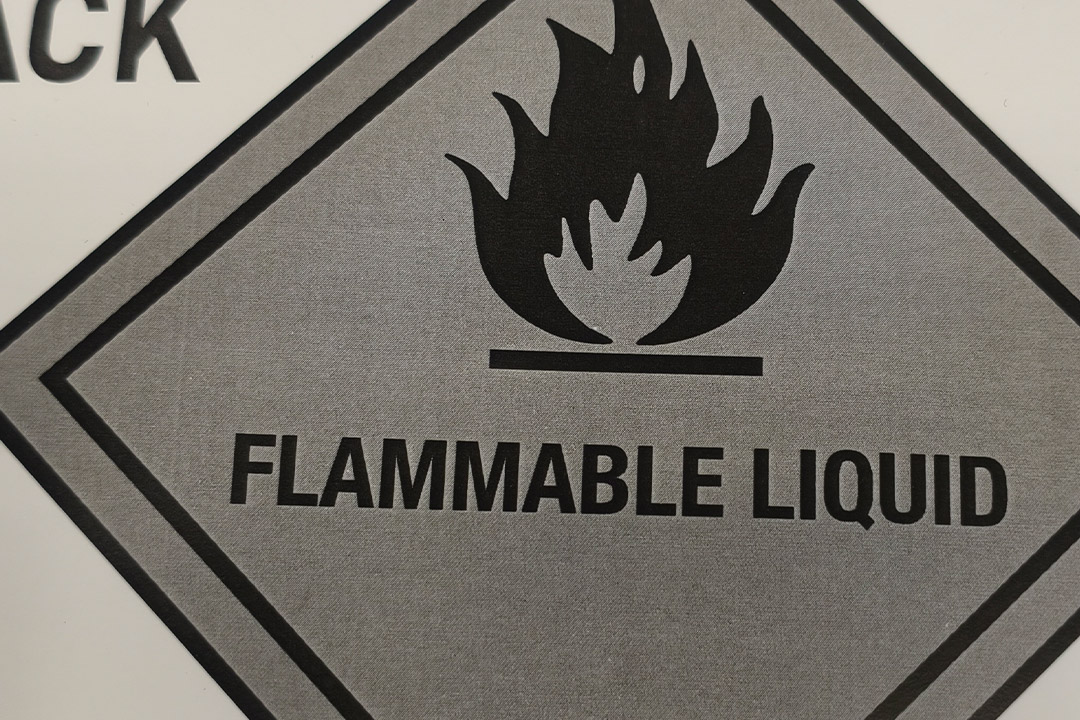
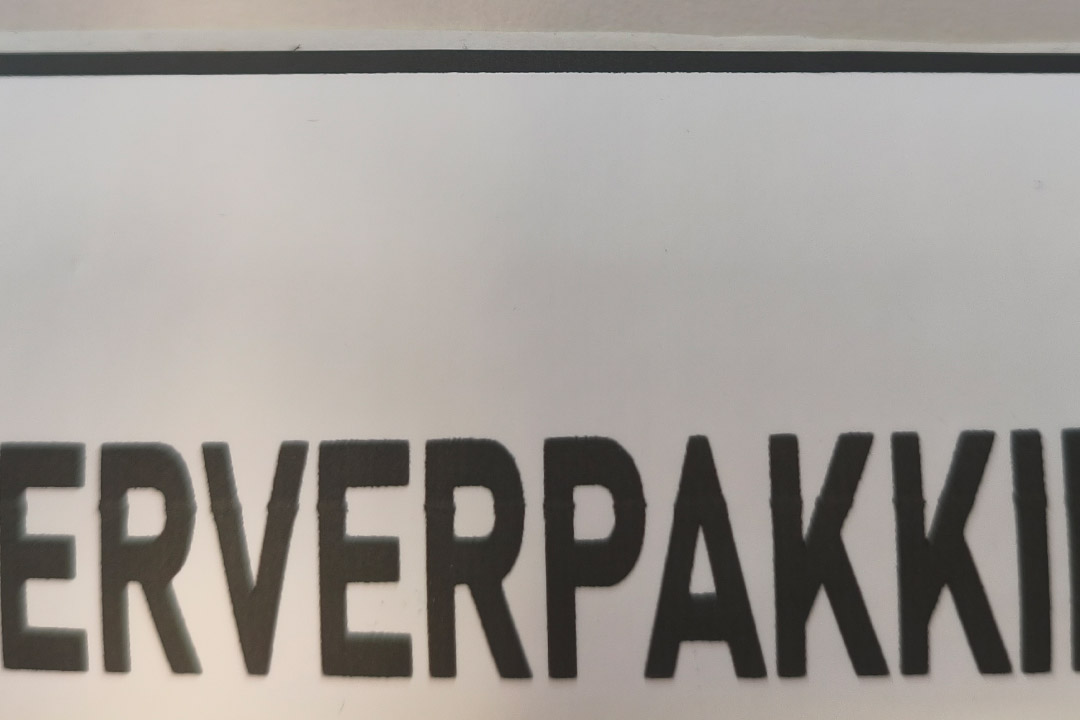
Why self-printing is dangerous: penalties and fines
Errors in dangerous goods labeling are not only unpleasant, but also costly. In the event of a violation, this not only means that the delivery may not be accepted, but also that fines or even penalties may be imposed. In many cases, the absence of a correctly labeled danger label is considered as no labeling, which leads to refusal of transport. It becomes particularly problematic if dangerous goods enter the transportation process without the correct labeling and the incorrect handling of dangerous substances is discovered during an inspection.
The risk of fines and other legal consequences can easily be overlooked by self-printing, especially when smaller quantities are involved. Incorrect danger labels could lead to the transport being classified as unsafe, which can lead to immediate delays and fines. Often, the hazard labels then have to be affixed correctly at a later date – with additional effort and costs.
BOXLAB Services: Secure, flexible and cost-effective
When you rely on BOXLAB Services, you no longer have to worry about these problems. We offer hazard labels in small quantities that are legally compliant and meet all legal requirements. Whether you only need a small number of hazard labels or a larger quantity for shipping, we can supply you with everything you need for the safe transportation of your hazardous goods – quickly, flexibly and reliably.
Why BOXLAB Services is the better choice:
Individual order quantities:
With us, you can order hazard labels from as little as 1 piece, without unnecessary excess stock or storage costs.
Fast delivery:
Our short delivery times ensure that your hazard labels are ready for dispatch on time.
Legal certainty:
Our hazard labels comply 100% with the applicable regulations and are certified – you can be sure that you are on the safe side.
Advice and expertise:
At BOXLAB Services, you benefit from professional advice on selecting the right hazard labels and labeling solutions. We help you to find the right hazard labels for your specific needs.
Conclusion: Avoid risk and rely on BOXLAB Services
Printing your own hazard labels may seem like a cost-effective solution at first glance, but there are enormous risks involved. Errors in labeling can not only endanger safety, but also lead to fines, penalties and transport refusals. It therefore often makes more sense to rely on a qualified provider such as BOXLAB Services, which offers you legally compliant solutions in flexible quantities. This allows you to transport your dangerous goods safely and in compliance with the law – without the risk of costly errors.
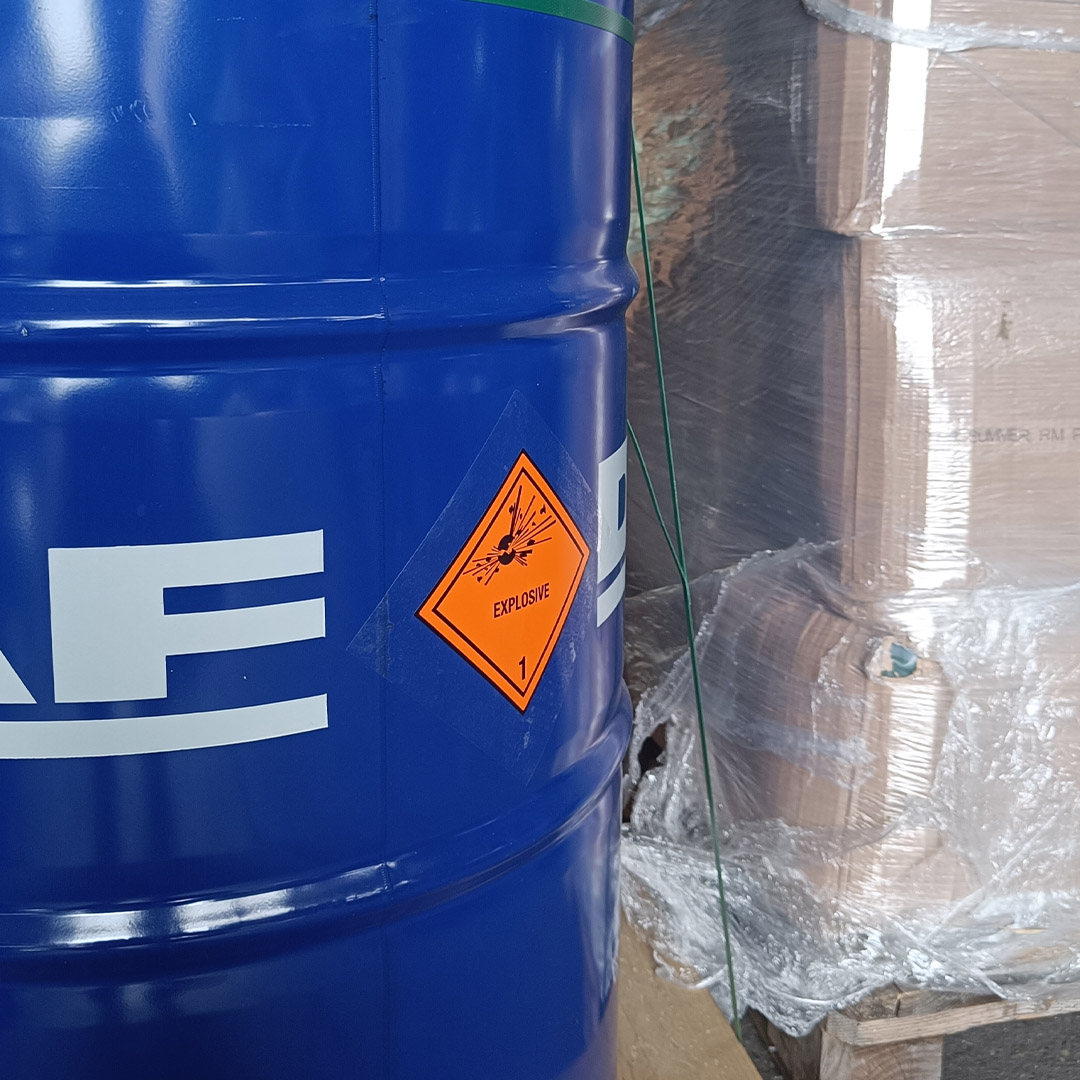
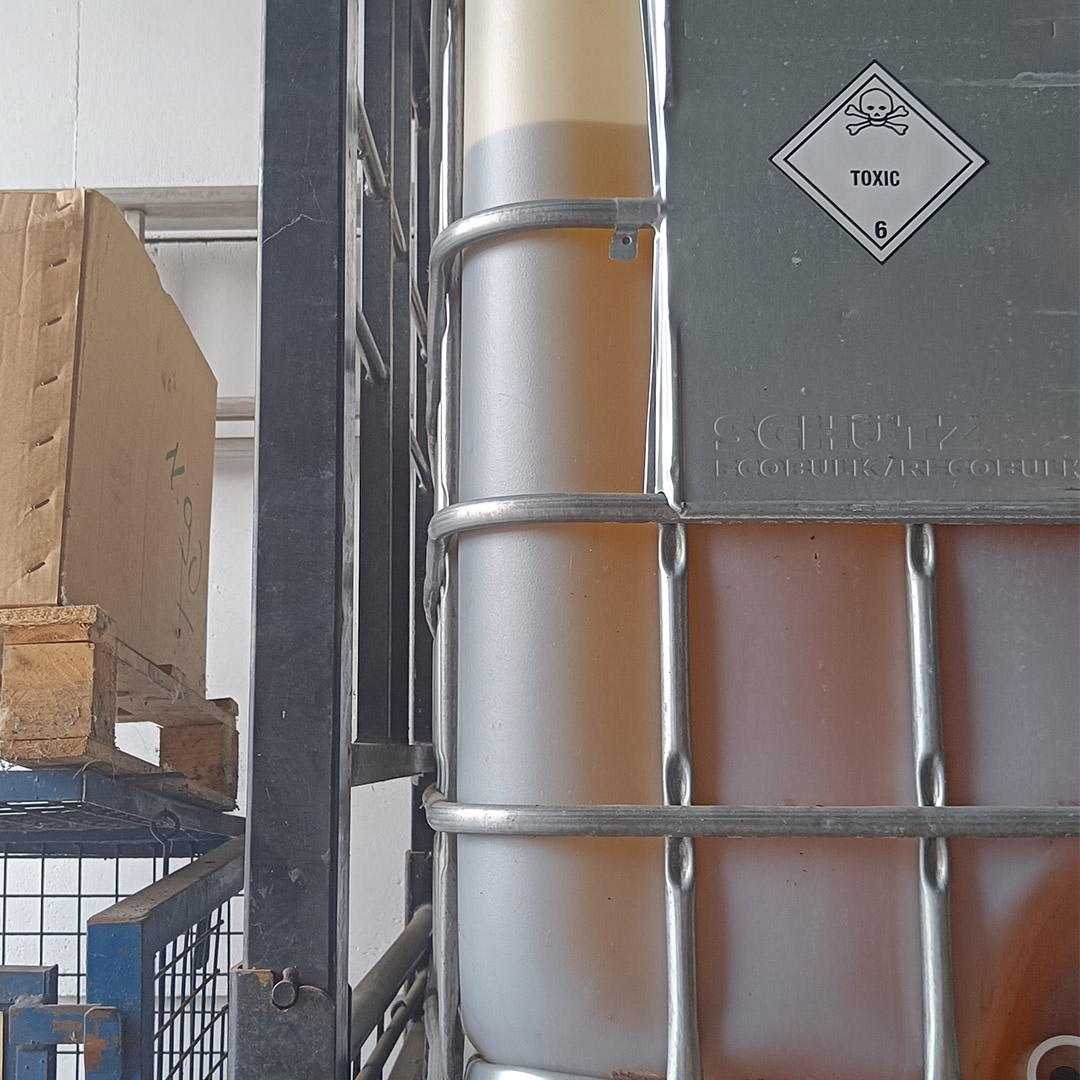
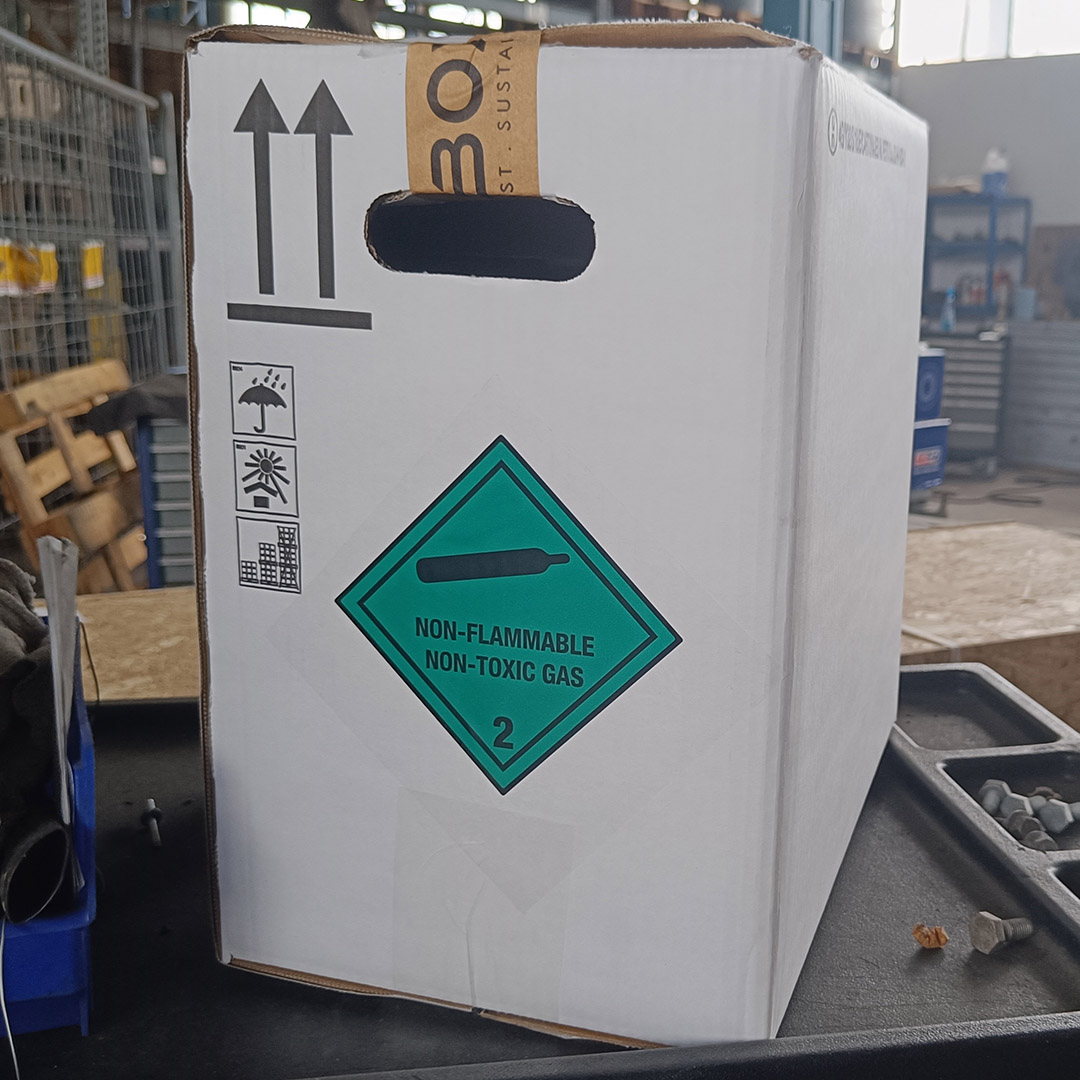
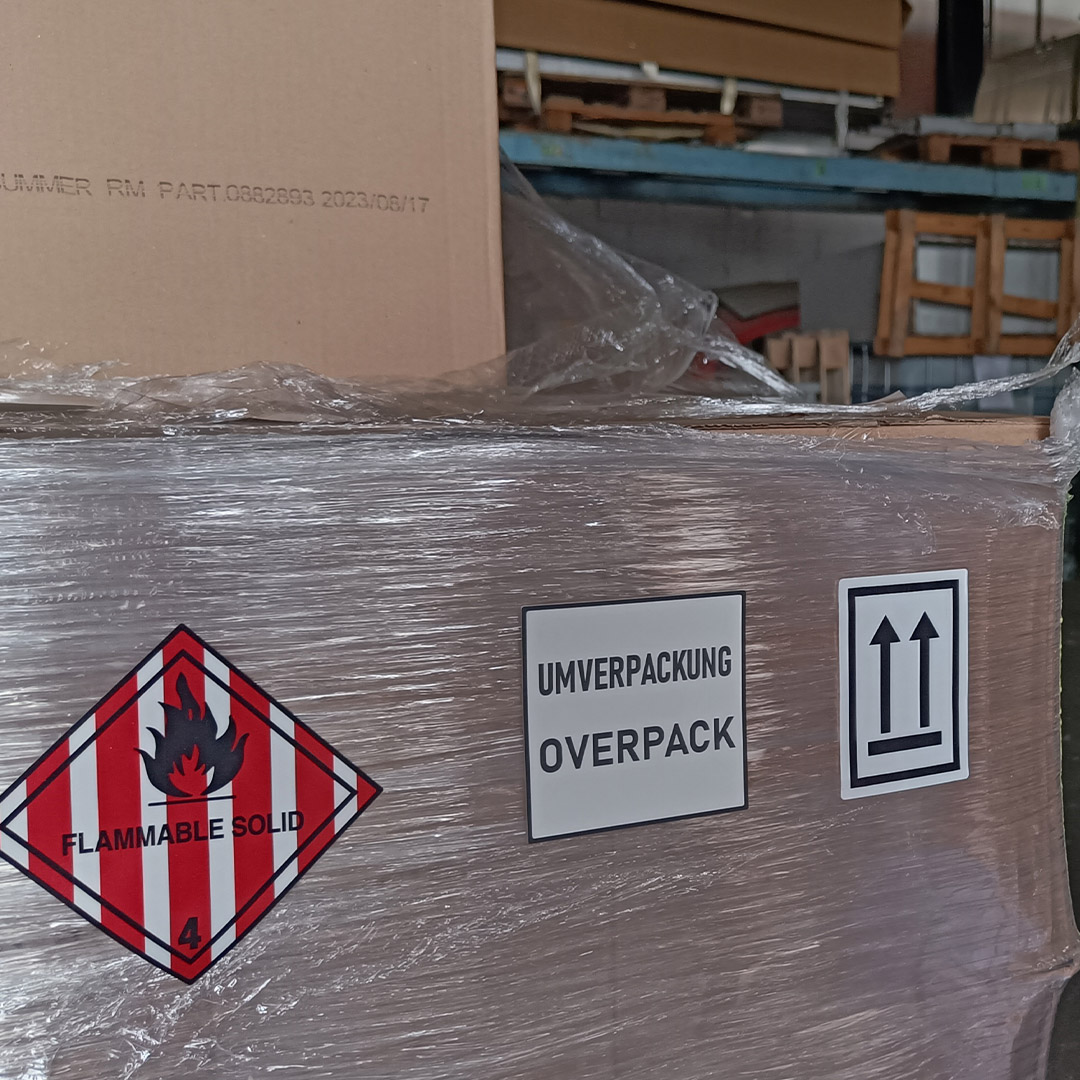
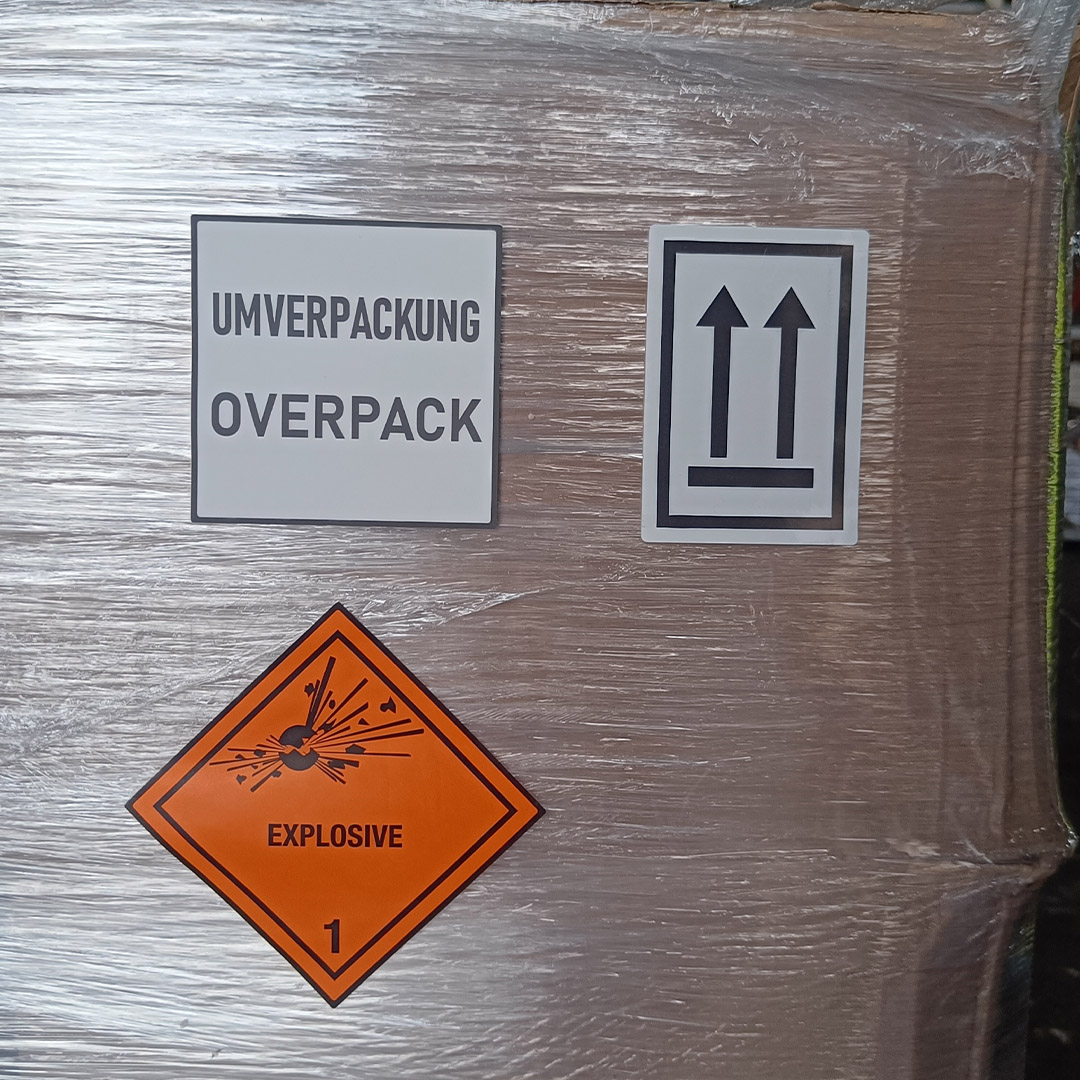
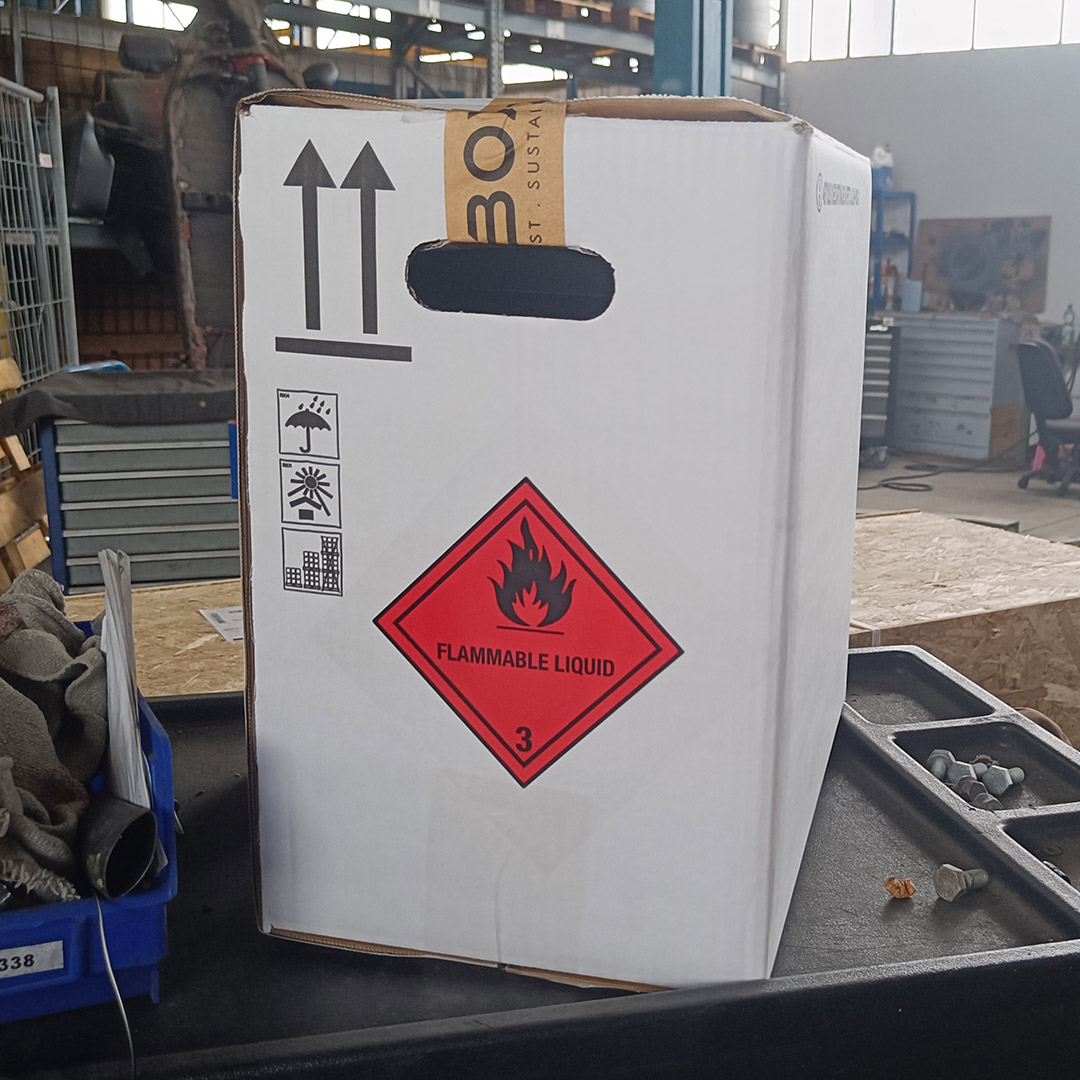


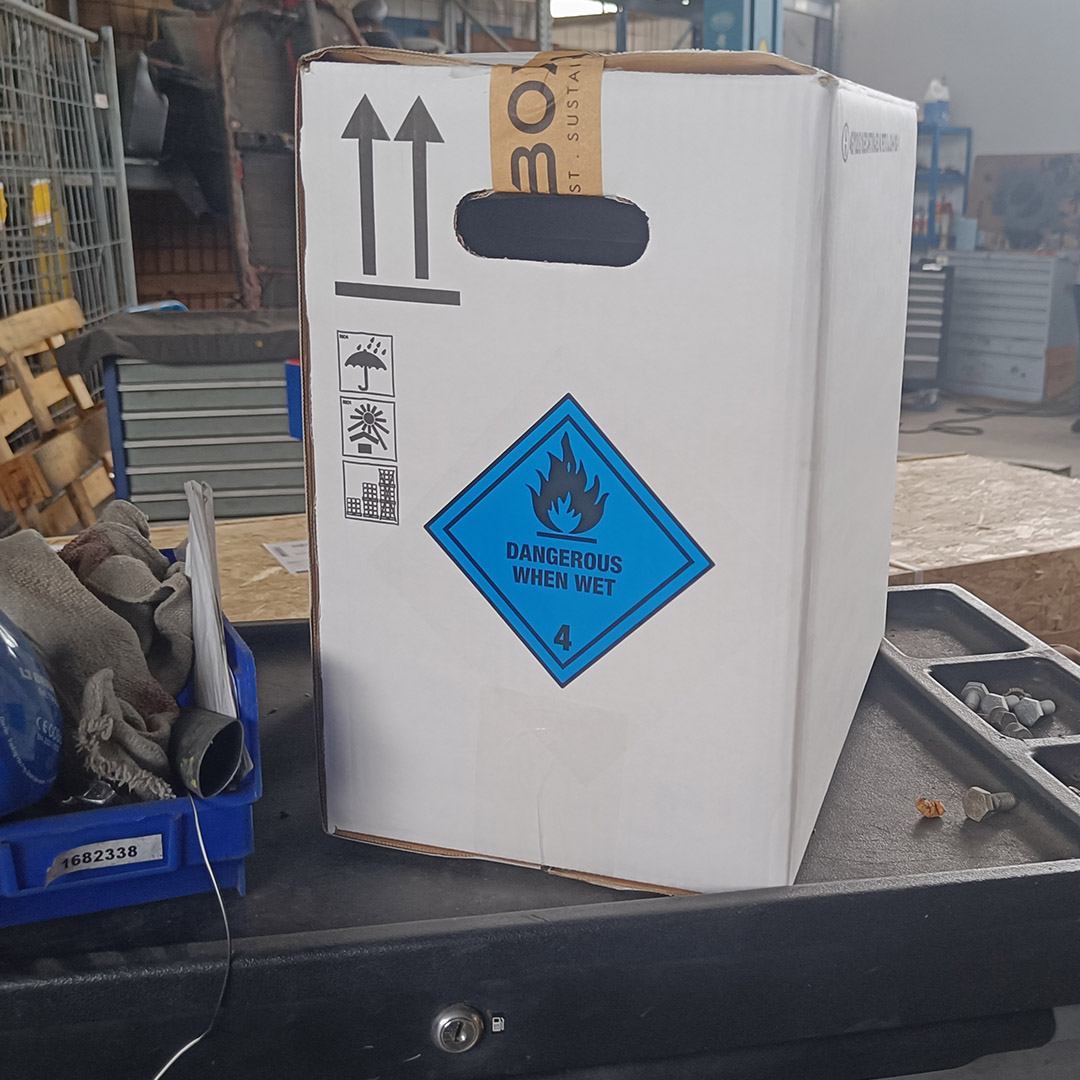
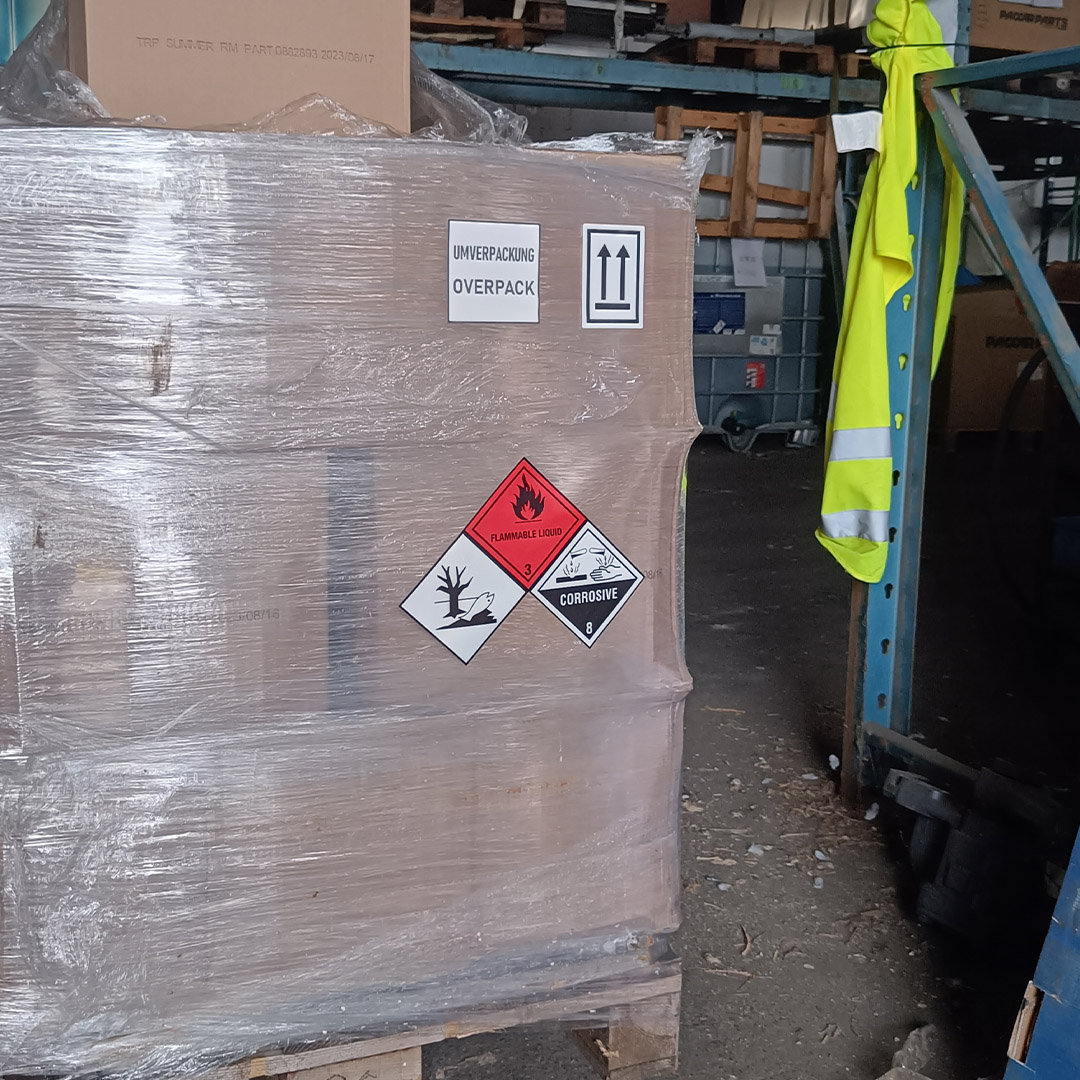
FAQ
Why shouldn't I print dangerous goods labels myself?
Printing dangerous goods labels yourself involves considerable risks, as it is difficult to implement all legal requirements and technical specifications correctly. Errors in size, symbol arrangement, color reproduction or choice of material can lead to legal consequences, penalties or even transport refusals. It is safer to rely on a provider like BOXLAB Services that meets all legal requirements.
What happens if the dangerous goods labels are incorrect?
If dangerous goods labels are incorrect, this can result in transportation being refused. Incorrect labeling is considered as no labeling, which can lead to fines and penalties. An inspection may reveal that the safety regulations have not been complied with, which can lead to delays and additional costs.
Can I download dangerous goods labels as a PDF from the Internet and print them myself?
There are many free or paid PDF templates available on the internet, but these often do not comply with current legal requirements or are out of date. Downloading and using these PDFs can lead to incorrect labels, which can lead to legal problems. Make sure that PDF files are updated regularly to comply with all regulations.
What do I have to bear in mind regarding the size and arrangement of the hazardous goods labels?
The size and positioning of symbols and text fields on hazardous goods labels is regulated by law. For example, the ADR regulation stipulates that hazardous goods labels must comply with certain minimum sizes and spacing. Errors in the arrangement of the symbols or non-compliance with the size requirements mean that the labels are considered invalid and the safety of the transport is jeopardized.
What material should be used for hazardous goods labels?
Dangerous goods labels must be made of durable material that can withstand the challenges of transportation – such as water, UV radiation, chemicals and extreme weather conditions. If you print your own dangerous goods labels, you need to make sure that you use the right material that meets the requirements for the transportation of dangerous goods. Our dangerous goods labels meet all requirements and are both durable and resistant.
What legal regulations apply to dangerous goods labels?
Dangerous goods labels must comply with international regulations, including the ADR Regulation for road transport, the IMDG Code for sea transport and the IATA DGR for air transport. These regulations govern the size, symbols, colors and spacing on the labels. Incorrect labels that do not meet the requirements may mean that the transport cannot be carried out.
What are the advantages of BOXLAB Services compared to self-printing?
BOXLAB Services offers you legally compliant dangerous goods labels, delivered quickly and flexibly. With BOXLAB, you don’t have to worry about faulty labels, delayed deliveries or legal consequences. Our labels meet 100% of the applicable regulations and offer you the best protection against costly errors and penalties.
Does BOXLAB Services offer dangerous goods labels in small quantities?
Yes, at BOXLAB Services you can order hazardous goods labels from a quantity of just 1. This means you don’t have to buy large stocks and avoid unnecessary warehousing costs. Our flexible order quantity allows you to buy only as many labels as you actually need.
How quickly does BOXLAB Services deliver dangerous goods labels?
We offer fast delivery times so that your dangerous goods labels are ready for dispatch on time. You don’t have to worry about delays when you order our products. We guarantee fast and reliable delivery.
What support does BOXLAB Services offer for the selection of hazardous goods labels?
Our experts will be happy to advise you on choosing the right hazardous goods labels for your specific needs. Whether it’s choosing the right material or complying with legal regulations, we can help you find the best solution.
What are the penalties if dangerous goods labels are incorrect?
Incorrect hazardous goods labels can lead to fines, penalties and refusal of transportation. In some cases, this can also lead to legal consequences if dangerous goods are transported without the correct labeling. In addition, further costs may be incurred if the labels have to be affixed correctly at a later date.
Can BOXLAB Services also offer hazardous goods labels for special hazard classes?
Yes, we offer dangerous goods labels for all hazardous substances and hazard classes classified according to the ADR, IMDG and IATA DGR regulations. Our labels are specially designed for different types of transport and hazard categories to ensure that your dangerous goods labeling is always correct and legally compliant.
Get a free consultation now
Contact us today and let us work together to find the best solution for your hazardous goods labeling!
